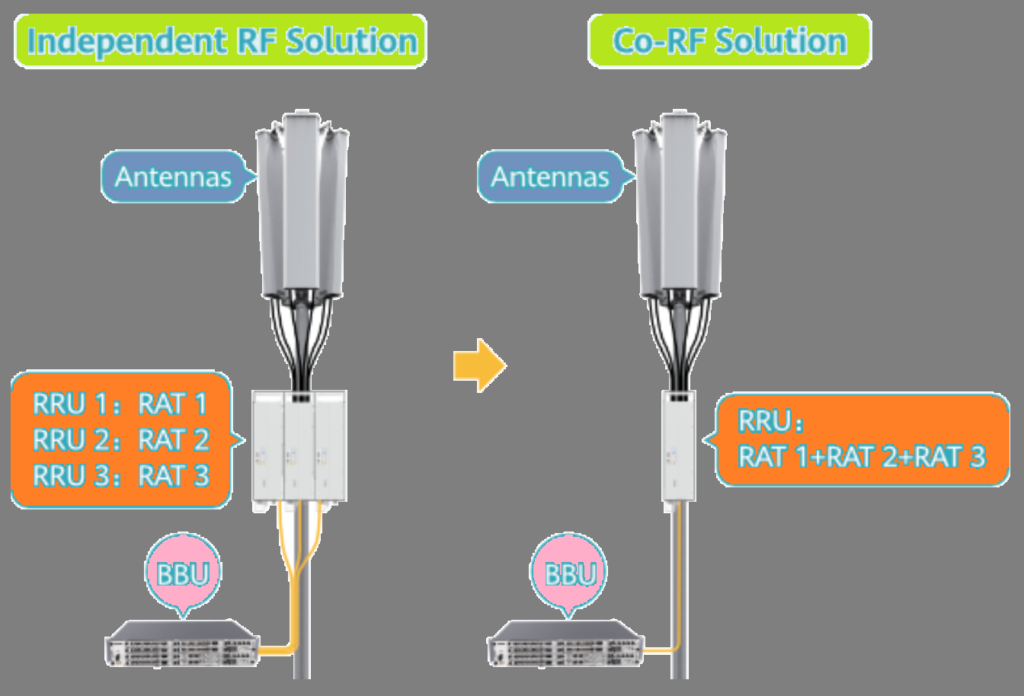In the early stages, wireless network devices of different RATs operated independently, requiring separate main control boards, baseband units, and RF modules. To simplify operations and reduce costs, Huawei introduced the SingleRAN solution, enabling smooth RAT evolution and efficient resource utilization.
The solution evolved into multimode base stations (MBTS), incorporating co-cabinet, co-BBU, co-MPT, co-BBP, and co-RF technologies, which streamline site configurations and enable faster, cost-effective deployments while ensuring compatibility across different RATs.
The co-RF solution is independent of the networking configurations of the main control board (MPT) and baseband processing unit (BBP). It can work seamlessly with either co-MPT and co-BBP solutions or separate-MPT and separate-BBP solutions. This flexibility enhances deployment options and optimizes resource sharing for multimode networks. For specific details about co-MPT and co-BBP, refer to the corresponding sections in the related technology series, as this section focuses solely on the co-RF solution.
Co-RF enables multiple RATs to share the same RF module, unlike independent RF, where each RAT requires its own RF module. This approach reduces installation space, power consumption, and deployment costs while simplifying network construction. It supports multimode operation through modules like Huawei’s RRU5502 and AAU5942 for GULN (FDD) and RRU5258 and AAU5639w for TN (TDD), ensuring efficient integration of new RATs without additional hardware expansion.

What are the advantages of co-RF?
In conclusion, co-RF provides key advantages such as faster deployment and cost-effective network evolution, the ability to share capacity, frequency, and spectrum across RATs, lower power consumption at sites, and reduced spare parts management costs, making it an efficient solution for operators to enhance network flexibility and operational efficiency.
Read Also: